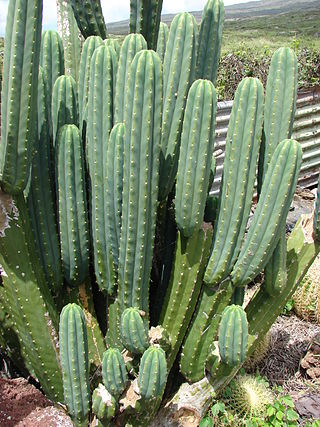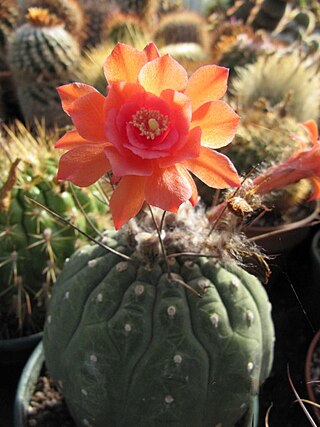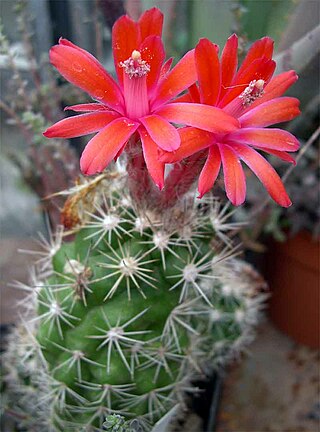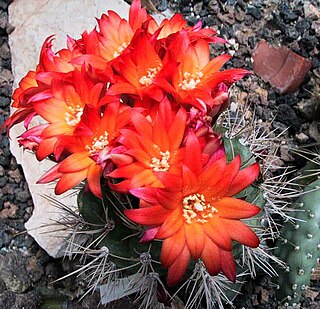
Pediocactus bradyi subsp. winkleri, commonly known as Winkler's cactus or Winkler's pincushion cactus, is a small cactus endemic to the state of Utah in the United States. It is known only from Emery and Wayne Counties.

Rapicactus zaragosae, synonym Turbinicarpus zaragosae, is a species of plant in the family Cactaceae. It is endemic to Mexico. Its natural habitat is hot deserts. It is threatened by habitat destruction.

Trichocereus macrogonus var. pachanoi is a fast-growing columnar cactus found in the Andes at 2,000–3,000 m (6,600–9,800 ft) in altitude. It is one of a number of kinds of cacti known as San Pedro cactus. It is native to Ecuador, Peru and Colombia, but also found in Argentina, Bolivia, Chile and Venezuela and cultivated in other parts of the world. Uses for it include traditional medicine and traditional veterinary medicine, and it is widely grown as an ornamental cactus. It has been used for healing and religious divination in the Andes Mountains region for over 3,000 years.

Pediocactus bradyi subsp. despainii is a rare species of cactus known by the common names Despain's cactus and San Rafael cactus.

Matucana aurantiaca is a species of flowering plant in the cactus family Cactaceae. It grows in the Cajamarca and La Libertad regions of Peru. It is considered to have a stable population and a wide range with no threats.

Espostoa lanata is a species of cactus of the genus Espostoa.

Matucana intertexta is a species of cactus in the genus Matucana, native to Peru. It has gained the Royal Horticultural Society's Award of Garden Merit.

Matucana aureiflora is a species of Matucana found in Peru.

Matucana formosa is a species of Matucana found in Peru.

Matucana weberbaueri is a species of Matucana found in Peru.

Matucana haynii is a species of Matucana found in Peru.

Matucana madisoniorum is a species of Matucana found in Peru.

Matucana tuberculata is a species of Matucana found in Peru.

Matucana ritteri is a species of Matucana found in Peru.

Matucana huagalensis is a species of Matucana found in Peru.

Matucana oreodoxa is a species of Matucana found in Peru.

Matucana krahnii is a species of Matucana found in Peru.

Matucana pujupatii is a species of Matucana found in Peru.
Matucana rebutiiflora is a species of cactus in the subfamily Cactoideae, native to Peru.
Matucana klopfensteinii is a species of Matucana found in Peru.

















